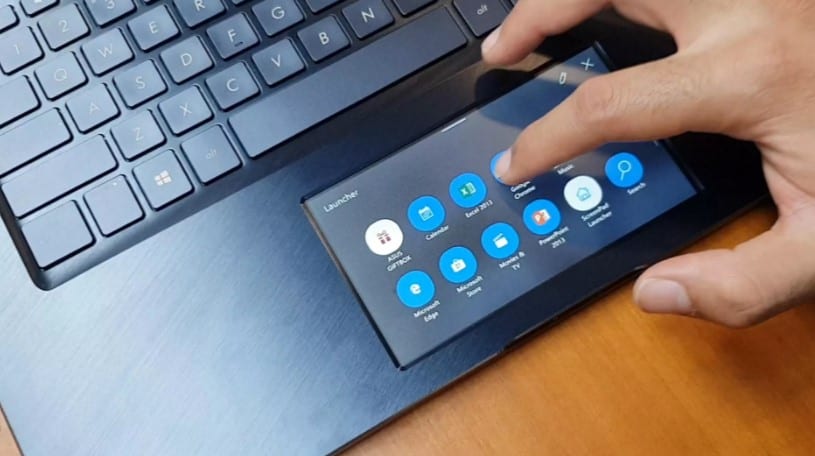
This year’s Computex convention in Taipei gave us a a glimpse into the next year in PCs. We got a good chunk of surprises, not the least of which was Asus’ futuristic dual-screen concept laptop.
Coming just as Razer is releasing a brand-new, sexier-than-ever Blade laptop, this in some ways cements the company as an innovator. But it’s also something of a problem, as Asus, ROG, MSI and more follow its lead, Razer is at risk of losing its innovative edge.
The most damaging case of this came on Monday, courtesy of the Asus-owned Republic of Gamers (ROG). It announced the ROG Phone, a handset for mobile gamers. Razer, you may recall, released a phone fitting that description late last year.
The Razer Phone’s star feature was its 120Hz refresh rate: Its screen refreshed roughly twice as many times per second as your Galaxy S9 or iPhone X. This makes browsing, watching and gaming smoother, such that CNET editor Sean Hollister called it a painful feature to lose once you’ve had it.

But as a gaming device, it looks outclassed by the ROG Phone. It’s too early to say definitively, but the ROG Phone appears to be built from the ground up to be a gaming device, rather than a phone that’s been tweaked for gaming.
Not only does it have a faster processor than any Android before it, it has virtual sensors on the side that essentially give you shoulder buttons while playing mobile games. That makes shooting in Fortnite significantly easier, for instance. Its suite of accessories is also insane, like the TwinView case that turns the phone into a dual-screen device that lets you play and stream at the same time.
Razer concept turned Asus reality
A day later it was Asus’ turn. The most headline-worthy computer announced was certainly Project Recog, a dual-screen laptop powered by AI. But my favourite announcement was the new ZenBook Pro line.
Asus says the ZenBook Pro’s touchpad is intelligent, a line I’d normally roll my eyes at. But the laptop’s touchpad actually doubles as a 5.5-inch, 1,920×1,080-pixel display, which the company calls a ScreenPad. Imagine a screen the size of an iPhone 8 Plus at the bottom of your laptop.
The uses of this vary. You can watch YouTube or browse social media on that second screen, though the utility of this is questionable since, y’know, there’s a much bigger screen above the keyboard. But Asus has its own suite of apps for the ScreenPad, including ones that turn it into a music player or a numkey section, and it’ll come with support for Microsoft Office programs, where it functions like the Touch Bar in newer MacBook Pros.
It’s fun and different, but not entirely new. Razer’s first Blade laptop had a touchpad that also doubled as a screen, except it was smaller and almost all of its applications were designed around gaming. This was six years ago. It wasn’t particularly popular though, and was cut from subsequent designs.
Then, earlier this year, Razer showed a concept design at CES. Called Project Linda, it was a Blade Stealth laptop with no touchpad. The idea is for you to slot a Razer Phone in there, which then acts as the touchpad and a second screen. Despite the impracticality of locking people down to the Razer ecosystem, the sort of move only Apple can really get away with, it looked really cool.
We haven’t heard about any plans to make Project Linda real. But unfortunately for Razer, we don’t really need to, because the ZenBook Pro is basically that.
Slim, slight, Stealth
The last company to steal Razer’s thunder was MSI, a brand known for beastly gaming rigs. Its Computex standout? The Prestige PS42, a 14-inch ultrabook to compete with the Dell XPS laptops of the world.
It’s thinner and lighter than a 13-inch MacBook Pro and has an 8th-gen i7 CPU and Nvidia MX150 graphics. It’s hitting store shelves in Q3 of this year. We don’t know pricing, but it’s fun to see a gaming company try its hand at an ultraslim laptop.
The only other gaming company to do this was of course Razer, which in 2016 launched the Blade Stealth. That range is still alive and rocking today.
All these announcements follow the biggest one of last year’s Computex: Nvidia’s Max-Q architecture that let companies cram hugely powerful GPUs into Ultrabook-sized laptops. Previously, this was a claim only the Razer Blade could make, but Computex this year was abound with laptops the size of a MacBook Pro, from the likes of MSI, Samsung and even Xiaomi, packing GeForce graphics cards.
It’s not like Razer is out of the game. Its new Blade looks like a solid upgrade, featuring a beautiful edge-to-edge, 144Hz display. But all of a sudden, it no longer feels like it’s in a league of its own when it comes to innovation.























